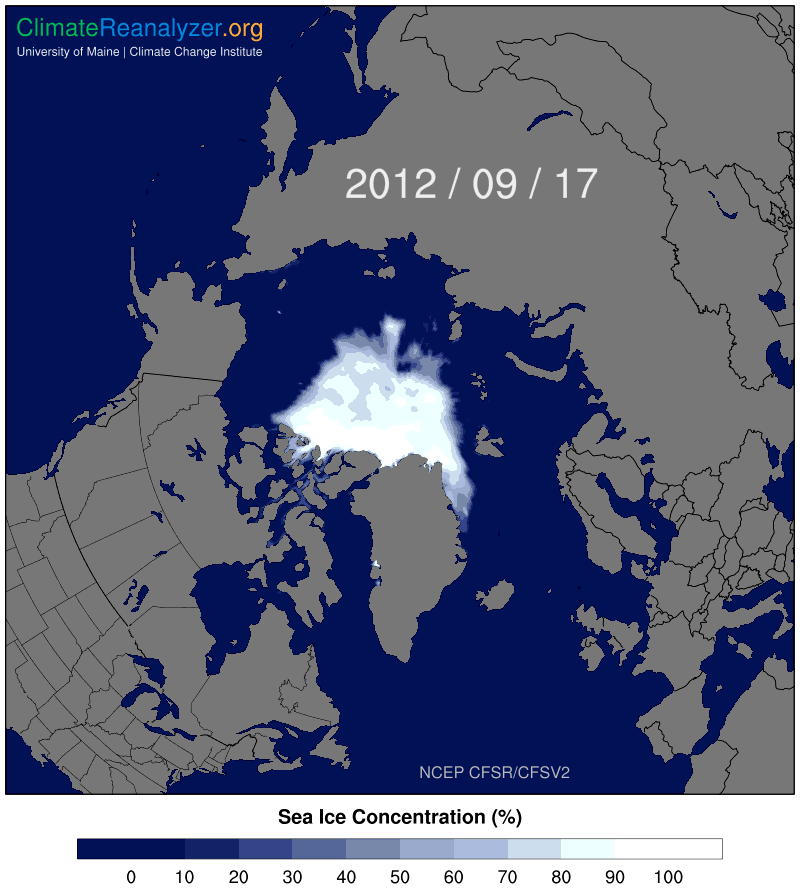Explore Climate Change
Climate change refers to long-term variation in Earth's climate effected by heating imbalances from natural (e.g., solar, volcanic, and internal dynamics) and human sources (e.g., greenhouse gas emissions and land use). Following the onset of the Industrial Revolution, and particularly since the 1960s, global climate has warmed primarily as a consequence of rising greenhouse-gas concentrations in the atmosphere related to industrial activity. This page provides a selection of template maps and timeseries depicting changes in temperature, precipitation, and other aspects of climate over the past century, and how they are projected to change in the future.
Historical and Future Projected Climate
The chart below shows observed (black), model-simulated (gray), and model-projected (blue, green, orange, red) global mean temperature departures from a 1901-2000 climate baseline. The future projection curves are multi-model ensemble means from the Coupled Model Intercomparison Project version 5 (CMIP5) for RCP (Representative Concentration Pathway) experiments 2.6 (greenhouse-gas emissions peak and decline) - 8.5 (emissions continue unabated). These projections, which underpin seminal findings from the Intergovernmental Panel on Climate Change (IPCC), represent a physically-based range of possible global temperature outcomes over the next several decades.
Recent Climate Change
Long-term changes in climate are understood from data amassed from station-based weather
observation, weather balloons, ship and buoy measurements of ocean temperature, satellites, and
other sources. A diverse array of information is now available as
gridded data and
reanalysis. The charts below are made
from the latter data products, and depict climate anomalies of the past two decades for temperature,
precipitation, near-surface wind speed, mean sea-level pressure, and sea ice. Climate "anomaly"
represents the departure from long-term baseline climatologies. Commonly used baselines include
1901-2000 (full century), 1979-2000 (recent historical period prior to significant warming in
the Arctic), and 1981-2010 (the present climate normal as defined by the
World Meteorological Organization).
The maps and timeseries in this section can be reproduced on Climate Reanalyzer from the following
pages:
World
Arctic
Sea Ice Decline
Continental U.S.
El Niño/Southern Oscillation
The El Niño Southern Oscillation (ENSO)
is a recurring change in sea surface temperature (SST) and atmospheric patterns across the tropical
Pacific that affects global climate on 2-7 year timescales. There are two ENSO modes that develop
with differing intensities: El Niño (warm) and La Niña (cool). The impacts of ENSO vary across the
globe — some places see drought, others more rainfall — but the regional signatures of
El Niño and La Niña tend to be consistent.
The maps and timeseries data below can be reproduced on Climate Reanalyzer from the following
pages:
Characteristic SST Patterns
El Niño Climate Tendencies
The annual mean temperature and precipitation anomaly maps below represent the difference
between average conditions for the ten strongest El Niño and La Niña events since 1950. This analysis
indicates the general anomaly patterns, or tendencies, that have historically developed in association
with strong El Niño events. The anomaly phase is opposite for La Niña events.
El Niño (1958,1964,1966,1973,1983,1987,1992,1998,2010,2016)
La Niña (1950,1956,1971,1974,1976,1989,1999,2000,2008,2011)
World
Continental U.S.
Climatological Normals
The maps below show annual mean climatological normals (1981-2010) for temperature, precipitation,
near-surface wind speed, and mean sea level pressure.
Maps of climatological normals for other variables, domains, and seasons can be made on
Climate Reanalyzer using:
































